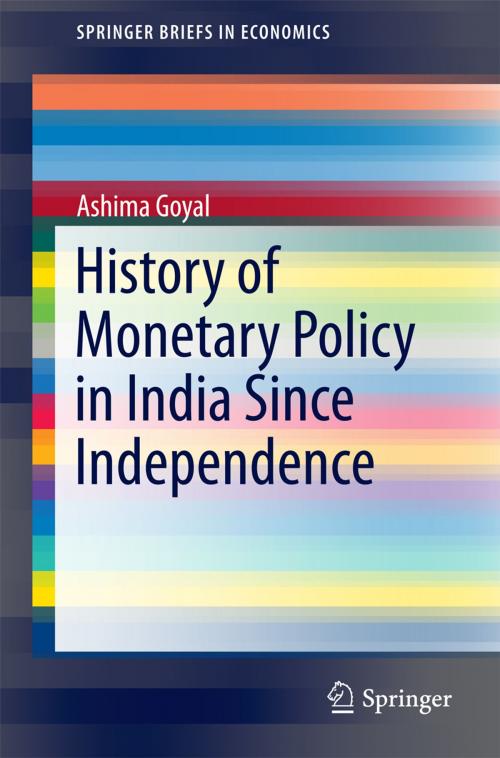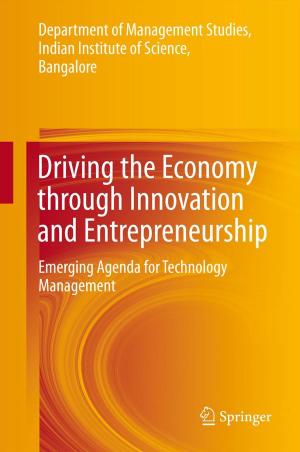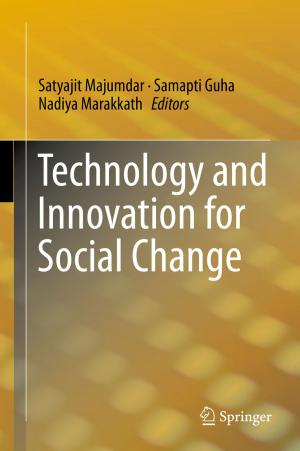History of Monetary Policy in India Since Independence
Business & Finance, Economics, Macroeconomics, Finance & Investing, Finance| Author: | Ashima Goyal | ISBN: | 9788132219613 |
| Publisher: | Springer India | Publication: | July 16, 2014 |
| Imprint: | Springer | Language: | English |
| Author: | Ashima Goyal |
| ISBN: | 9788132219613 |
| Publisher: | Springer India |
| Publication: | July 16, 2014 |
| Imprint: | Springer |
| Language: | English |
The book discusses Indian post-independence monetary history in the context of the country’s development and the global changes of the period. The conceptual framework used is the SIIO (Structure, Ideas, Institutions and Outcomes) paradigm. That is, structure and ideas become embedded in institutions and affect outcomes. Narrative history, data analysis and research reports demonstrate the dialectic between ideas and structure with respect to monetary history, aspects of India’s development, and the global institutions and events that impacted monetary choices. The history of the economy and of the global changes that affected it covers a time when major changes took place both in India and internationally.
India’s greater openness is important both for it and for the world, but it occurred at a time of major global crises. How did these impact monetary choices and how did the latter help India navigate the crises while maintaining its trajectory towards greater liberalization? The book explores these and other relevant but under-analyzed questions.
The initial combination of ideas and structure created fiscal dominance and made monetary policy procyclical. An aggregate supply-and-demand framework derived from forward-looking optimization subject to Indian structural constraints is able to explain growth and inflation outcomes in the light of policy actions. Using exogenous supply shocks to identify policy shocks and to isolate their effects, demonstrate that policy was sometimes exceedingly strict despite the common perception of a large monetary overhang. Surges and sudden stops in capital flow also constrained policy.
But the three factors that cause a loss of monetary autonomy—governments, markets and openness—moderate each other. Markets moderate fiscal profligacy and global crises moderate market freedoms and ensure openness remains a sequenced and gradual process. The book argues greater current congruence between ideas and structure is improving institutions and contributing to India’s potential.
The book discusses Indian post-independence monetary history in the context of the country’s development and the global changes of the period. The conceptual framework used is the SIIO (Structure, Ideas, Institutions and Outcomes) paradigm. That is, structure and ideas become embedded in institutions and affect outcomes. Narrative history, data analysis and research reports demonstrate the dialectic between ideas and structure with respect to monetary history, aspects of India’s development, and the global institutions and events that impacted monetary choices. The history of the economy and of the global changes that affected it covers a time when major changes took place both in India and internationally.
India’s greater openness is important both for it and for the world, but it occurred at a time of major global crises. How did these impact monetary choices and how did the latter help India navigate the crises while maintaining its trajectory towards greater liberalization? The book explores these and other relevant but under-analyzed questions.
The initial combination of ideas and structure created fiscal dominance and made monetary policy procyclical. An aggregate supply-and-demand framework derived from forward-looking optimization subject to Indian structural constraints is able to explain growth and inflation outcomes in the light of policy actions. Using exogenous supply shocks to identify policy shocks and to isolate their effects, demonstrate that policy was sometimes exceedingly strict despite the common perception of a large monetary overhang. Surges and sudden stops in capital flow also constrained policy.
But the three factors that cause a loss of monetary autonomy—governments, markets and openness—moderate each other. Markets moderate fiscal profligacy and global crises moderate market freedoms and ensure openness remains a sequenced and gradual process. The book argues greater current congruence between ideas and structure is improving institutions and contributing to India’s potential.















